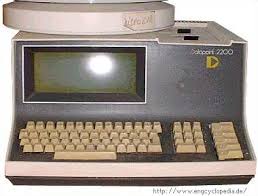18 Feb 2015 Punched Cards to Cloud Computing
Eloquent Systems Celebrates 40 Years!

Throughout the years, Merv Richter (pictured, right), Founder & President of Eloquent Systems, has seen some incredible changes in the world of technology, and managed to ride the rollercoaster through four decades of tech evolution. Now, as Eloquent celebrates their 40th Anniversary, BCTIA takes an inside look at how Merv Richter built his company, evolved his business model, and continues to expand his company forty years later.
1975 was a year of transition for Merv Richter, the founder and current president of Eloquent Systems Inc. Armed with an honours degree in mathematics and an 8 year career at IBM, he struck out on his own, founding a software development company for R&D and a second operating company for sales of the software licenses and delivery of related professional services.

The search for an economical RJE machine uncovered a minicomputer from Data Point Inc. in Texas. It was popular with large oil companies as a replacement for keypunches. The data would be entered from multiple “dumb” terminals connected to the mini and collected on a magnetic tape that would be physically moved to a large mainframe computer for processing. The mini could telecommunicate it as a batch to the mainframe.
Richter’s first income for his new company was a consulting project using the Data Point mini. On this job he soon realized that by connecting a disk drive (a little smaller than a top loaded washing machine) to the mini rather than a tape drive, he could perform the complete application and avoid the cost of mainframe processing. This led to developing a completely integrated library system (ILS). It integrated processes that previously required 3 different systems: one for buying the books, one for managing loans (circulation), and another for the online public catalogue. Other applications such as oil rig accounting, mortgage management, general accounting including payroll, soon followed to meet the market demand.
Oil companies such as Exxon, Tenneco, and Chevron were a convenient market for the ILS since they already adopted the Data Point mini. Another ex-IBM colleague felt that such a prestigious client list would help the share price of his publically traded Sydney Development Corp., so he bought the operating company. Mr. Richter became a director of Sydney and remained as President of the Easy Data subsidiary for two years.
During a brief retirement, Richter became fascinated by the potential of the new micro-technology and bought a 2-diskette IBM-PC and a copy of the newly released multi-valued database system, Revelation from Cosmos Inc., which was designed for developing software to run on minicomputers. The database supported variable length records and multi-valued fields, critical features for building his multi-dimensional generic cataloging software, named GENCAT.

Richter reactivated his R&D company, named it Eloquent Systems Inc. and put his new product on the market. The generic design of GENCAT made it a “database of things”; cataloging much more than books. It was soon used by a large number of libraries where it became the first integrated library system (ILS) for the PC market and later as the records and information management (RIM) system for governments and corporations. The integrated classification scheme and retention schedule exceeded the capability offered by mainframe systems.
When UNESCO published ISAD(G) (General International Standard Archival Description) in 1993 it included the “Level of description” concept. GENCAT was the only software that could gracefully support hierarchical structures required to support the idea, attracting many prestigious customers across the continent. Consultants used GENCAT to develop a number of custom applications for archives and other KM applications.
In the late 90’s the software world was moving from DOS to Windows. Eloquent developed WinGENCAT, a Windows user interface for the product line but the GENCAT runtime platform and development toolkit remained in the more efficient DOS environment. During the same time period Revelation was bought and moved from Settle to New York where the Windows development was mismanaged. Unstable software was further aggravated by the company’s poor VAR relationship, so Eloquent changed to another multivalued, Pick-style, system from jBASE Inc. in Portland, Oregon.
By 2000 all application development at Eloquent was with the new WebGENCAT Toolkit. The server component ran on any Windows server at the customer site or in the Eloquent Cloud. User access was with any common browser from anywhere at any time. A digital asset management (DAM) component was integrated with every application.
Mr. Richter was excited about the technology advances on the Web, but soon found that he was too far ahead of the market expectations. Customers and prospects were still focused on Windows solutions. They did not understand the technology trend or what WebGENCAT could do for them. Consultants, enjoyed more business with Windows applications and were afraid that cloud solutions would reduce the need for their services.
During the early 2000’s the WebGENCAT Toolkit was used to package four off-the-shelf, full-function, knowledge management (KM) applications: archives, library, museum, and records management. Customer systems were upgraded to the new Web platform. They had the option to take the entire integrated WebSuite, giving users “only one place to look” for all their resources. They could easily custom tailor the application and even build new modules with the WebGENCAT Toolkit.
The launch of Eloquent’s WebSuite product line has given the company an increased ability to implement and support customers around the globe without costly on-site visits. So now to grow his comfortable life-style company, Richter is partnering with other businesses in the same marketplace. They range from professional consulting firms to scanning and storage companies; anyone that provides a complementary service. This includes the recent announcement that Eloquent Software has expanded to include two new partners in the UK.
We want to congratulate Eloquent on forty years, and wish them continued success for years to come!
To learn more about Eloquent Systems, visit their website.

